Idea by
Nicholas Ferguson
Call for ideas 2017
Speedscaping
Speedscaping
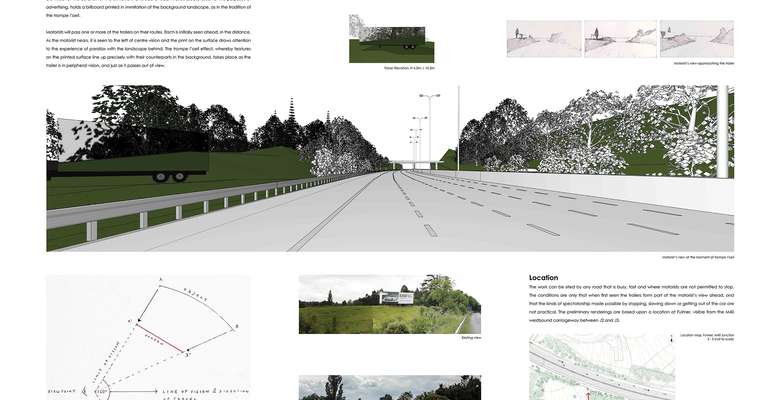
Speedscaping proposes a role for architecture in connecting motorists with the places through which they pass. If the car windscreen operates as a cinematic screen on which an ever-changing view is projected, then driving contributes to a disembodied perception of the environment. Speedscaping intervenes in this experience by modifying existing vernacular roadside architecture: obsolete vehicles positioned in fields adjacent to the highway so that they serve as advertising hoardings. Printed up to 'disappear' into their landscape context in the manner of trompe l'oeil art, these structures belong at once to the road and to the land, thereby acting as a visual and conceptual bridge between the road and its context. Perfect alignment with the landscape takes place only as the work passes into the motorist's peripheral vision and out of view. Thus, architecture is given a further future role as playful commentator on the impossibility of a satisfactory view of place when seen at speed.

Nick Ferguson. 2015. Speedscaping 1. Example of existing trailer being used for advertising

Nick Ferguson. 2015. Speedscaping 2. Digital driveby. Still.
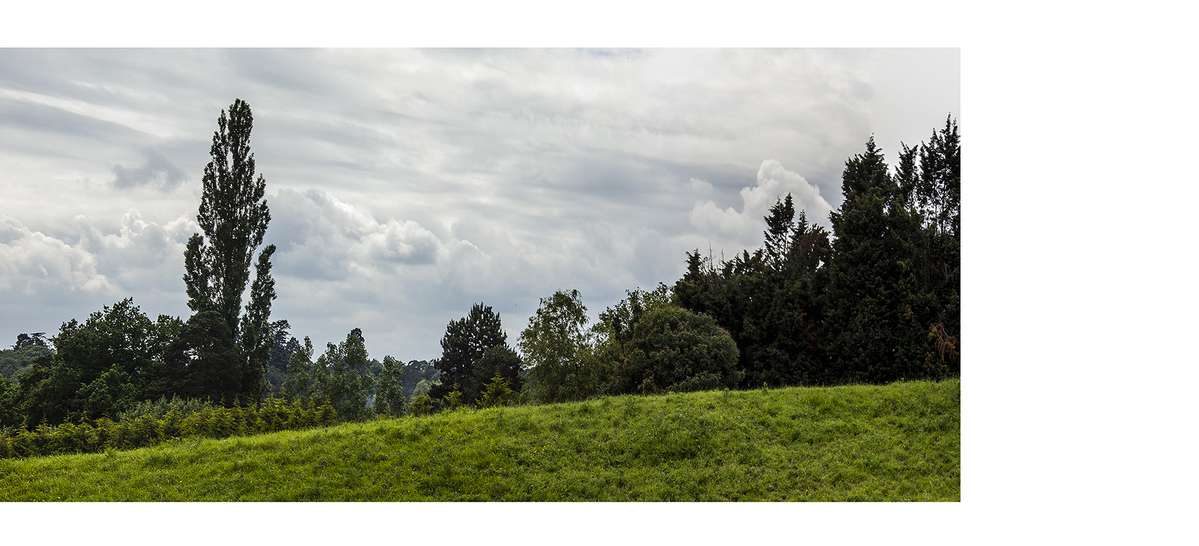
Nick Ferguson. 2015. Speedscaping 3. Anamorphically adjusted print.
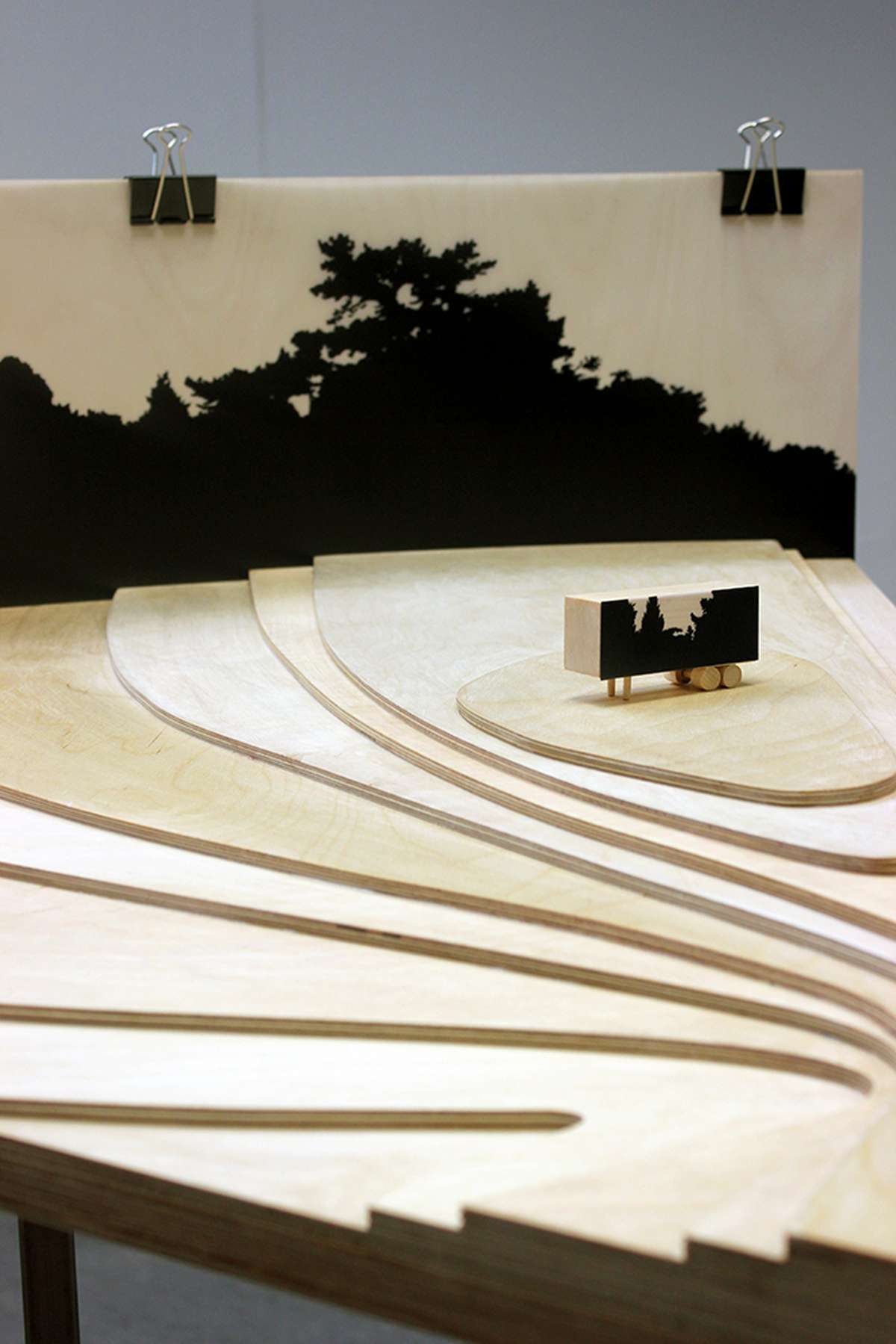
Nick Ferguson. 2015. Speedscaping 4. Diorama model
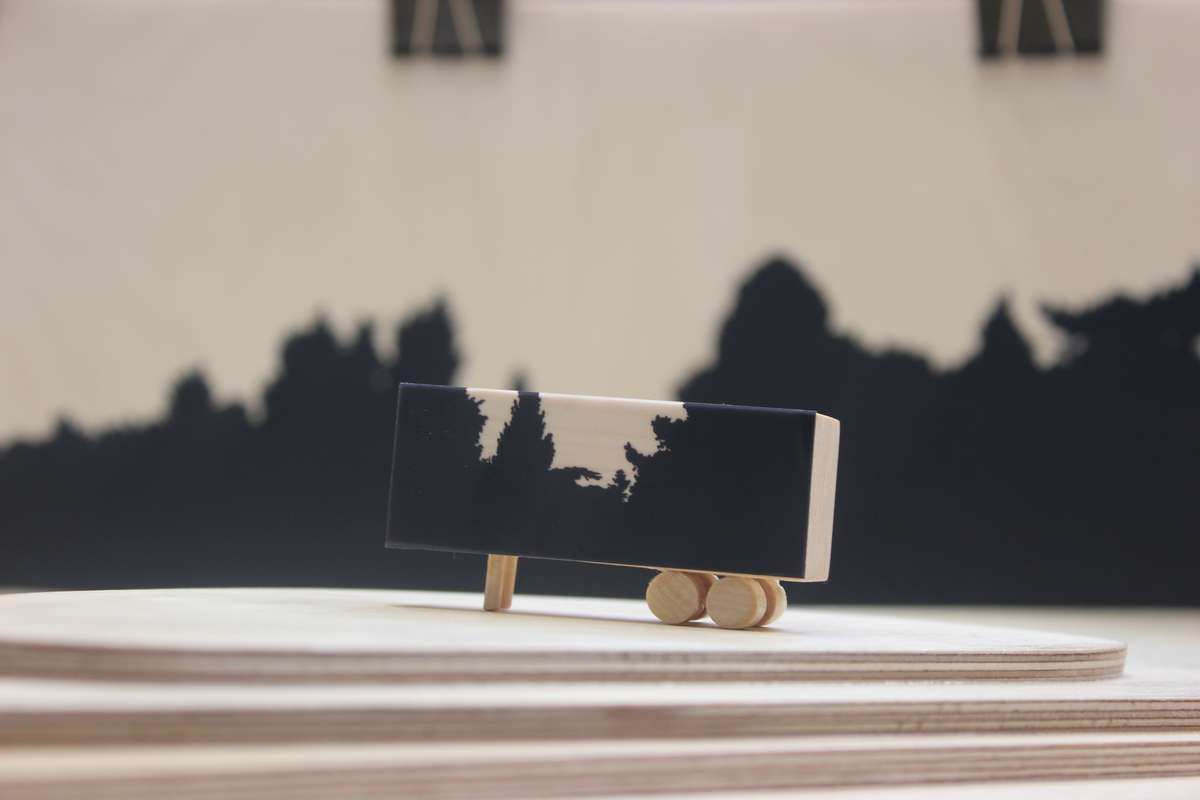
Nick Ferguson. 2015. Speedscaping 5. Diorama model detail.
Speedscaping
Speedscaping

Speedscaping proposes a role for architecture in connecting motorists with the places through which they pass. If the car windscreen operates as a cinematic screen on which an ever-changing view is projected, then driving contributes to a disembodied perception of the environment. Speedscaping intervenes in this experience by modifying existing vernacular roadside architecture: obsolete vehicles positioned in fields adjacent to the highway so that they serve as advertising hoardings. Printed up to 'disappear' into their landscape context in the manner of trompe l'oeil art, these structures belong at once to the road and to the land, thereby acting as a visual and conceptual bridge between the road and its context. Perfect alignment with the landscape takes place only as the work passes into the motorist's peripheral vision and out of view. Thus, architecture is given a further future role as playful commentator on the impossibility of a satisfactory view of place when seen at speed.

Nick Ferguson. 2015. Speedscaping 1. Example of existing trailer being used for advertising

Nick Ferguson. 2015. Speedscaping 2. Digital driveby. Still.

Nick Ferguson. 2015. Speedscaping 3. Anamorphically adjusted print.

Nick Ferguson. 2015. Speedscaping 4. Diorama model
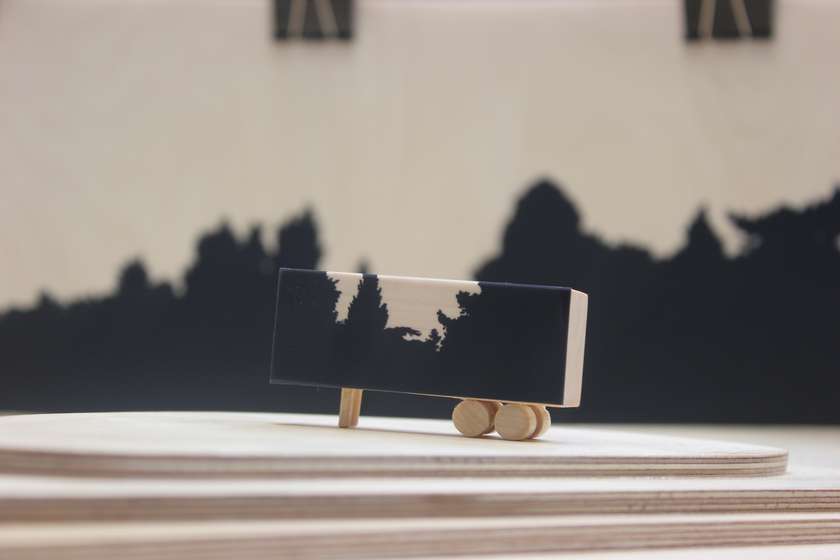
Nick Ferguson. 2015. Speedscaping 5. Diorama model detail.